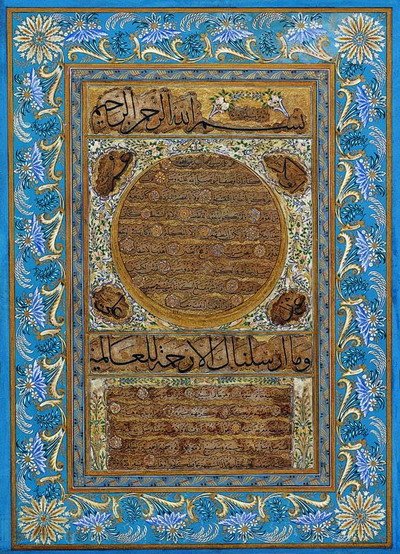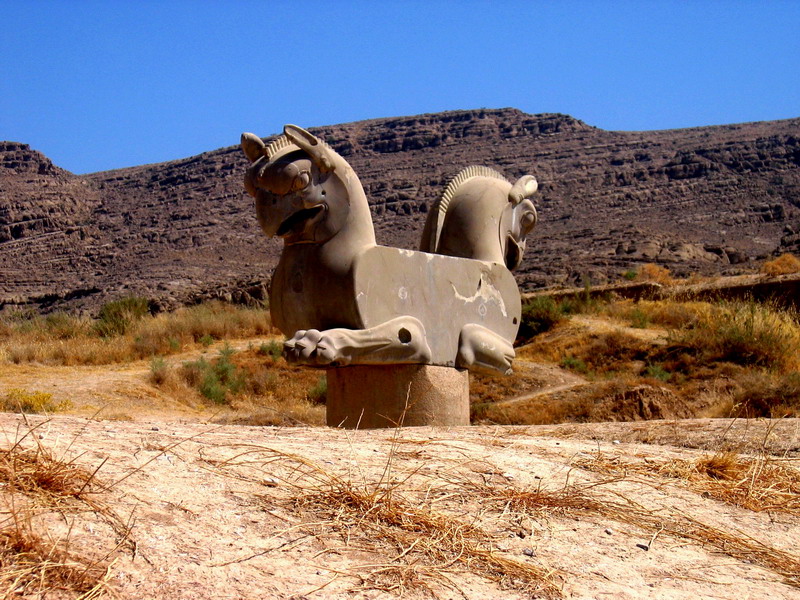|
Marzubannama
The ''Marzbān-nāma'' ( fa, مرزباننامه, lit=Book of Marzban) is an early 13th-century Persian prose work. It consists of "various didactic stories and fables used as illustrations of morality and right conduct", and belongs to the " mirror for princes" literary genre. It was written in 1210–1225 by Sa'ad al-Din Varavini, under the patronage of Abu'l-Qasem Harun, the vizier of the Eldiguzid ruler ('' atabeg'') Muzaffar al-Din Uzbek (1210–1225). The ''Marzbān-nāma'' was translated fully or as an abridgement into Turkish, Arabic, French and English. K. Crewe Williams notes that the ''Marzbān-nāma'' is said to have been based upon a non-extant precursor, which was written in the vernacular of Tabaristan (a historic region in northern Iran) around the 10th century, by the Bavandid ruler Al-Marzuban (979–986). As opposed to normal practise, the three illustrations found at the beginning of the earliest extant manuscript (dated 1299) were drawn before the te ... [...More Info...] [...Related Items...] OR: [Wikipedia] [Google] [Baidu] |
Depictions Of Muhammad
The permissibility of depictions of Muhammad in Islam has been a contentious issue. Oral and written descriptions of Muhammad are readily accepted by all traditions of Islam, but there is disagreement about visual depictions. The Quran does not explicitly or implicitly forbid images of Muhammad. The ahadith (supplemental teachings) present an ambiguous picture, but there are a few that have explicitly prohibited Muslims from creating visual depictions of human figures. It is agreed on all sides that there is no authentic visual tradition (pictures created during Muhammad's lifetime) as to the appearance of Muhammad, although there are early legends of portraits of him, and written physical descriptions whose authenticity is often accepted. The question of whether images in Islamic art, including those depicting Muhammad, can be considered as religious art remains a matter of contention among scholars. They appear in illustrated books that are normally works of history or poetry, ... [...More Info...] [...Related Items...] OR: [Wikipedia] [Google] [Baidu] |
Malek National Museum And Library
Malek National Museum and Library ( fa, کتابخانه و موزه ملی ملک) is a museum and national library in Tehran, Iran. Malek National Library and Museum Institution (MNLMI) is the first private museum of Iran, and one of the 6 large libraries holding the exquisite manuscripts. The MNLMI collection is a rich trove of the best manuscripts and Iranian historical artworks. The Institution is located in the historical precinct of “Bagh-e Melli”, that is considered the cultural-historical center of Tehran. Usually, the MNLM visitors are numerous university students and researchers, as well as tourists who enjoy its library and museum facilities. It is one of the biggest libraries of precious manuscripts in Iran, built by Hadji Hussein Agha Malek, the richest man in Iran at the time. He built it in a traditional Persian architecture style. One of the biggest contributors is Esat Malek Malek, Hadji Hussein Agha Malek's eldest daughter, who contributed to the museum's dev ... [...More Info...] [...Related Items...] OR: [Wikipedia] [Google] [Baidu] |
Iran
Iran, officially the Islamic Republic of Iran, and also called Persia, is a country located in Western Asia. It is bordered by Iraq and Turkey to the west, by Azerbaijan and Armenia to the northwest, by the Caspian Sea and Turkmenistan to the north, by Afghanistan and Pakistan to the east, and by the Gulf of Oman and the Persian Gulf to the south. It covers an area of , making it the 17th-largest country. Iran has a population of 86 million, making it the 17th-most populous country in the world, and the second-largest in the Middle East. Its largest cities, in descending order, are the capital Tehran, Mashhad, Isfahan, Karaj, Shiraz, and Tabriz. The country is home to one of the world's oldest civilizations, beginning with the formation of the Elamite kingdoms in the fourth millennium BC. It was first unified by the Medes, an ancient Iranian people, in the seventh century BC, and reached its territorial height in the sixth century BC, when Cyrus the Great f ... [...More Info...] [...Related Items...] OR: [Wikipedia] [Google] [Baidu] |
Cultural Depictions Of Muhammad
Culture () is an umbrella term which encompasses the social behavior, institutions, and norms found in human societies, as well as the knowledge, beliefs, arts, laws, customs, capabilities, and habits of the individuals in these groups.Tylor, Edward. (1871). Primitive Culture. Vol 1. New York: J.P. Putnam's Son Culture is often originated from or attributed to a specific region or location. Humans acquire culture through the learning processes of enculturation and socialization, which is shown by the diversity of cultures across societies. A cultural norm codifies acceptable conduct in society; it serves as a guideline for behavior, dress, language, and demeanor in a situation, which serves as a template for expectations in a social group. Accepting only a monoculture in a social group can bear risks, just as a single species can wither in the face of environmental change, for lack of functional responses to the change. Thus in military culture, valor is counted a typical ... [...More Info...] [...Related Items...] OR: [Wikipedia] [Google] [Baidu] |
Persian Mythology
Persian mythology or Iranian mythology ( Persian:اساطیرشناسی ایرانی) is the body of the myths originally told by ancient Persians and other Iranian peoples, and a genre of Ancient Persian folklore. These stories concern the origin and nature of the world, the lives and activities of deities, heroes, and mythological creatures, and the origins and significance of the ancient Persians' own cult and ritual practices. Modern scholars study the myths to shed light on the religious and political institutions of not only modern-day Iran but the Greater Iran, which includes regions of West Asia, Central Asia, South Asia and Transcaucasia where Iranian culture has had significant influence. Historically, these were regions long ruled by dynasties of various Iranian empires, that incorporated considerable aspects of Persian culture through extensive contact with them, or where sufficient Iranian peoples settled to still maintain communities who patronize their respective ... [...More Info...] [...Related Items...] OR: [Wikipedia] [Google] [Baidu] |
Literary Illuminated Manuscripts
Literature is any collection of written work, but it is also used more narrowly for writings specifically considered to be an art form, especially prose fiction, drama, and poetry. In recent centuries, the definition has expanded to include oral literature, much of which has been transcribed. Literature is a method of recording, preserving, and transmitting knowledge and entertainment, and can also have a social, psychological, spiritual, or political role. Literature, as an art form, can also include works in various non-fiction genres, such as biography, diaries, memoir, letters, and the essay. Within its broad definition, literature includes non-fictional books, articles or other printed information on a particular subject.''OED'' Etymologically, the term derives from Latin ''literatura/litteratura'' "learning, a writing, grammar," originally "writing formed with letters," from ''litera/littera'' "letter". In spite of this, the term has also been applied to spoken or ... [...More Info...] [...Related Items...] OR: [Wikipedia] [Google] [Baidu] |
Fables
Fable is a literary genre: a succinct fictional story, in prose or verse, that features animals, legendary creatures, plants, inanimate objects, or forces of nature that are anthropomorphized, and that illustrates or leads to a particular moral lesson (a "moral"), which may at the end be added explicitly as a concise maxim or saying. A fable differs from a parable in that the latter ''excludes'' animals, plants, inanimate objects, and forces of nature as actors that assume speech or other powers of humankind. Conversely, an animal tale specifically includes talking animals as characters. Usage has not always been so clearly distinguished. In the King James Version of the New Testament, "" ("''mythos''") was rendered by the translators as "fable" in the First Epistle to Timothy, the Second Epistle to Timothy, the Epistle to Titus and the First Epistle of Peter. A person who writes fables is a fabulist. History The fable is one of the most enduring forms of folk literature, sp ... [...More Info...] [...Related Items...] OR: [Wikipedia] [Google] [Baidu] |
13th-century Books
The 13th century was the century which lasted from January 1, 1201 ( MCCI) through December 31, 1300 ( MCCC) in accordance with the Julian calendar. The Mongol Empire was founded by Genghis Khan, which stretched from Eastern Asia to Eastern Europe. The conquests of Hulagu Khan and other Mongol invasions changed the course of the Muslim world, most notably the Siege of Baghdad (1258), the destruction of the House of Wisdom and the weakening of the Mamluks and Rums which, according to historians, caused the decline of the Islamic Golden Age. Other Muslim powers such as the Mali Empire and Delhi Sultanate conquered large parts of West Africa and the Indian subcontinent, while Buddhism witnessed a decline through the conquest led by Bakhtiyar Khilji. The Southern Song dynasty would begin the century as a prosperous kingdom but would eventually be invaded and annexed into the Yuan dynasty of the Mongols. The Kamakura Shogunate of Japan would be invaded by the Mongols. Goryeo resist ... [...More Info...] [...Related Items...] OR: [Wikipedia] [Google] [Baidu] |
Encyclopedia Iranica
An encyclopedia (American English) or encyclopædia (British English) is a reference work or compendium providing summaries of knowledge either general or special to a particular field or discipline. Encyclopedias are divided into articles or entries that are arranged alphabetically by article name or by thematic categories, or else are hyperlinked and searchable. Encyclopedia entries are longer and more detailed than those in most dictionaries. Generally speaking, encyclopedia articles focus on ''factual information'' concerning the subject named in the article's title; this is unlike dictionary entries, which focus on linguistic information about words, such as their etymology, meaning, pronunciation, use, and grammatical forms.Béjoint, Henri (2000)''Modern Lexicography'', pp. 30–31. Oxford University Press. Encyclopedias have existed for around 2,000 years and have evolved considerably during that time as regards language (written in a major international or a ve ... [...More Info...] [...Related Items...] OR: [Wikipedia] [Google] [Baidu] |
Bavand Dynasty
The Bavand dynasty () (also spelled Bavend), or simply the Bavandids, was an Iranian dynasty that ruled in parts of Tabaristan (present-day Mazandaran province) in what is now northern Iran from 651 until 1349, alternating between outright independence and submission as vassals to more powerful regional rulers. They ruled for 698 years, which is the second longest dynasty of Iran after the Baduspanids. Origins The dynasty itself traced its descent back to Bav, who was alleged to be a grandson of the Sasanian prince Kawus, brother of Khosrow I, and son of the shah Kavad I (ruled 488–531), who supposedly fled to Tabaristan from the Muslim conquest of Persia. He rallied the locals around him, repelled the first Arab attacks, and reigned for fifteen years until he was murdered by a certain Valash, who ruled the country for eight years. Bav's son, Sohrab or Sorkab ( Surkhab I), established himself at Perim on the eastern mountain ranges of Tabaristan, which thereafter became th ... [...More Info...] [...Related Items...] OR: [Wikipedia] [Google] [Baidu] |
Tabaristan
Tabaristan or Tabarestan ( fa, طبرستان, Ṭabarestān, or mzn, تبرستون, Tabarestun, ultimately from Middle Persian: , ''Tapur(i)stān''), was the name applied to a mountainous region located on the Caspian coast of northern Iran. It corresponded to the present-day province of Mazandaran, which became the predominant name of the area from the 11th-century onwards. Pre-Islamic era Tabaristan was named after the Tapurians, who had been deported there from Parthia by the Parthian king Phraates I (). At the advent of the Sasanians, the region, along with Gilan and Daylam, was part of the Padishkhwargar kingdom of king Gushnasp, who is mentioned in the Letter of Tansar. He submitted to the first Sasanian King of Kings () Ardashir I () after being guaranteed to keep his kingdom. His line would continue ruling Padishkhwargar until the second reign of Kavad I (), who removed the dynasty from power and appointed his son Kawus in its stead. Under the Sasanians, T ... [...More Info...] [...Related Items...] OR: [Wikipedia] [Google] [Baidu] |







